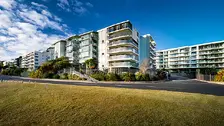Should You Invest in Apartments, Townhouses, or Family Homes in NZ?
 By
Trent Bradley
·
15 minute read
By
Trent Bradley
·
15 minute read

Property type represents one of the most consequential decisions property investors face. Should you invest in apartments offering lower entry prices and potentially higher yields? Townhouses providing a middle ground between apartments and houses? Or traditional standalone family homes with land ownership and maximum appreciation potential?
Key Takeaways
- Apartments offer lowest entry prices ($450,000-$700,000 in Auckland vs $800,000-$1.2M for houses) and highest rental yields (5-6% gross vs 3-4% for houses), but body corporate fees ($3,000-$8,000+ annually) erode yield advantages significantly
- Houses on reasonable land parcels consistently deliver superior long-term capital appreciation due to land scarcity and enduring demand for standalone homes, though requiring highest capital outlays and complete maintenance responsibility
- Townhouses provide middle ground with moderate pricing ($650,000-$800,000), family-friendly appeal, and potential for house-like appreciation, but complex title structures (especially cross-lease) can create financing and resale complications
- New Zealand apartments have historically underperformed houses in capital growth—while houses in Auckland doubled over certain periods, many apartment buildings showed modest or minimal appreciation
- Leaky building risks affect apartments constructed roughly 1990-2004, with substantial remediation costs and lingering stigma affecting values even after repairs
- Strategic portfolio diversification across property types captures different return profiles—combining high-growth houses (accepting negative cash flow) with high-yield apartments (offsetting portfolio cash flow) creates balanced performance
- Property selection quality matters more than property type alone—an outstanding apartment in a supply-constrained location purchased below market value outperforms a mediocre house in a weak location at premium pricing
At Luminate Financial Group, we regularly help investors navigate this decision. The answer isn't universal – each property type has distinct characteristics, advantages, and challenges. What works brilliantly for one investor might prove disastrous for another based on their budget, strategy, risk tolerance, and market selection.
Understanding the nuances of apartments, townhouses, and houses in the New Zealand context enables you to make informed decisions aligned with your investment goals rather than following generic advice or assumptions that may not apply to your situation.
Let's examine each property type comprehensively to help you determine which suits your investment strategy best.
Understanding Apartments
Apartments are self-contained residences within multi-unit buildings, typically with shared common areas and facilities managed by body corporate arrangements.
Apartment Characteristics in New Zealand
Lower Entry Prices: Apartments generally offer the most affordable entry points into property investment, particularly in major centers. Where houses might cost $800,000-$1.2 million in desirable Auckland suburbs, apartments in similar locations might range $450,000-$700,000, reducing deposit requirements substantially.
Body Corporate Structures: All apartments operate under body corporate (or unit title) arrangements where owners collectively own and maintain common property including building exteriors, shared facilities, landscaping, and common areas. Body corporate levies fund this maintenance and build reserves for major works.
Higher Density Living: Apartments involve closer proximity to neighbors, shared walls and floors, and typically smaller floor areas than houses or townhouses. This density creates both benefits (urban convenience, security) and challenges (noise, privacy limitations).
Urban Locations: Most New Zealand apartments concentrate in central city locations or major suburban centers, offering walkability, public transport access, and urban amenity. Few apartments exist in traditional suburban or regional settings.
Mixed Investment Performance: New Zealand apartment markets have delivered inconsistent performance compared to houses, with some developments appreciating well while others have stagnated or experienced minimal growth over extended periods.
Advantages of Apartment Investment
Affordability and Accessibility: Lower purchase prices make apartments accessible to investors with limited capital or those wanting to enter expensive markets like Auckland CBD or Wellington's central areas. A $500,000 apartment requires approximately $200,000 deposit under current LVR rules versus $320,000+ for an $800,000 house.
Higher Rental Yields: Apartments typically generate higher gross rental yields than houses in the same locations, often 5-6% gross yields versus 3-4% for comparable houses. This improved yield helps with cash flow, though body corporate fees consume significant portions of this advantage.
Lower Maintenance Responsibilities: Owners handle interior maintenance only. The body corporate manages exterior maintenance, building repairs, grounds keeping, and shared facilities. This reduces unexpected costs and management time compared to houses requiring complete property maintenance.
Urban Lifestyle Appeal: Apartments attract specific tenant demographics including young professionals, couples without children, and downsizing empty nesters who value urban convenience over space. This tenant pool often includes stable, employed individuals.
Security Features: Apartment buildings typically offer security features like secure entry, intercom systems, and sometimes concierge services that appeal to tenants and may reduce vacancy risks.
Lower Insurance Costs: Apartment insurance typically costs less than house insurance since body corporate policies cover buildings and common areas while owner policies cover contents and interior fitout only.
Disadvantages of Apartment Investment
Body Corporate Fees: These fees typically range $3,000-$8,000+ annually depending on building amenities and age. Buildings with pools, gyms, lifts, or older buildings requiring substantial maintenance command higher fees. These fees significantly erode rental yield advantages.
Limited Capital Growth: New Zealand apartments have historically underperformed houses in capital appreciation. While houses in Auckland doubled in value over certain periods, many apartment buildings showed modest or minimal appreciation. This pattern isn't universal but represents significant risk.
Leaky Building Risks: New Zealand experienced widespread weathertightness issues in buildings constructed roughly 1990-2004. Many apartments from this era face or have faced substantial remediation costs. Even remediated buildings carry stigma affecting values.
Oversupply Vulnerability: Apartment markets can suffer oversupply as developers complete multiple large buildings simultaneously. Auckland's central city has experienced periods where hundreds of apartments hit the market within months, suppressing rents and values.
Bank Lending Caution: Some banks apply stricter lending criteria to apartments, particularly in buildings with identified issues, high body corporate fees, or oversupply concerns. This can affect both your purchase financing and future buyers' ability to purchase from you.
Challenging Resale: Apartments sometimes take longer to sell than houses due to smaller buyer pools and bank lending caution. Investment apartments particularly face limited buyer interest compared to owner-occupier-focused apartments.
Depreciation and Obsolescence: Apartments depreciate through wear and aging more visibly than houses. A 20-year-old apartment shows its age more dramatically than a 20-year-old house on land. Obsolete fixtures, dated layouts, or worn common areas reduce appeal.
Special Levies Risk: Body corporates can impose special levies for major works beyond reserve funds. Unexpected levies of $10,000-$50,000+ are possible for significant building repairs or upgrades, creating financial shocks.
Understanding Townhouses
Townhouses occupy middle ground between apartments and standalone houses – typically multi-level dwellings sharing one or more walls with neighbors, often with small private outdoor spaces, under various ownership structures.
Townhouse Characteristics in New Zealand
Diverse Ownership Structures: Townhouses exist under various arrangements including unit title with body corporate (similar to apartments), cross-lease titles (where you own the building but share land ownership), or freehold titles (if subdivided properties).
Moderate Pricing: Townhouses typically price between apartments and standalone houses. Where apartments might be $500,000 and houses $900,000, townhouses often range $650,000-$800,000, offering accessibility without full house prices.
Suburban Integration: Unlike apartments concentrating in urban centers, townhouses spread throughout suburban areas, offering more location variety and access to family-friendly neighborhoods and schools.
Modern Construction: Many New Zealand townhouses are relatively new (2000s onwards) as they represent recent intensification responses to housing demands and planning changes enabling medium-density development.
Advantages of Townhouse Investment
Balanced Entry Price: Townhouses offer more affordable entry than houses while avoiding some apartment challenges. They provide land ownership (in many structures), reasonable space, and more traditional housing characteristics at moderate prices.
Family-Friendly Appeal: Townhouses often include multiple bedrooms, small outdoor spaces, and locations near schools, attracting family tenants willing to pay reasonable rents for house alternatives at lower costs than standalone homes.
Modern Design and Efficiency: Many townhouses feature contemporary designs, efficient layouts, good insulation, and modern amenities appealing to tenants. New or near-new condition reduces maintenance requirements initially.
Potential Capital Growth: Townhouses on freehold or properly structured unit titles can appreciate similarly to houses in their locations, particularly in areas experiencing intensification. They participate in general market appreciation while offering accessibility advantages.
Lower Body Corporate Fees: When townhouses have body corporates, fees are typically lower than apartment buildings due to simpler shared facilities. Some townhouse structures avoid body corporate entirely, eliminating this cost.
Outdoor Space: Even small private courtyards or gardens differentiate townhouses from apartments, attracting tenants who value outdoor access, particularly families with children or pet owners.
Disadvantages of Townhouse Investment
Complex Title Structures: Cross-lease titles particularly can create complications including all owners must approve alterations or improvements, potential disputes over shared land use, difficulties with refinancing as banks sometimes restrict cross-lease lending, and challenges selling to buyers unfamiliar with cross-lease complications.
Variable Build Quality: The townhouse construction boom included both quality developments and cheaper builds. Some townhouses have experienced weathertightness issues, building defects, or poor construction quality affecting values and maintenance costs.
Shared Wall Issues: Noise transmission through shared walls can create tenant complaints or disputes. Poor soundproofing in cheaper developments affects tenant satisfaction and retention.
Limited Land Value: Many townhouses sit on small land parcels with limited redevelopment potential. The land component of value may be minimal, with most value in the structure, limiting long-term appreciation potential compared to houses on larger land parcels.
Parking Limitations: Many townhouses provide only single garages or parking spaces, potentially limiting tenant appeal, particularly for families with multiple vehicles.
Body Corporate Governance: Even where body corporates exist, townhouse body corporates sometimes function less professionally than apartment building equivalents, potentially creating management challenges or deferred maintenance.
Understanding Family Homes
Standalone family homes represent traditional property investment – detached houses on separate land parcels under freehold title, offering maximum space, privacy, and land ownership.
Family Home Characteristics
Freehold Ownership: You own both land and building outright with no shared ownership complications. This provides maximum control, simplicity, and long-term value through land ownership.
Highest Entry Prices: Houses typically require largest capital outlays, particularly in desirable locations. This creates higher barriers to entry but also represents investment in scarce land resources.
Diverse Tenant Appeal: Houses attract the broadest tenant range including families with children, professionals seeking space and privacy, groups sharing accommodation, and essentially any tenant demographic.
Established Markets: House investment markets are mature and well-understood, with extensive historical performance data, established valuation approaches, and proven appreciation patterns.
Advantages of House Investment
Superior Capital Growth: Houses, particularly those on reasonable land parcels in desirable locations, have consistently delivered New Zealand's strongest long-term capital appreciation. Land scarcity and enduring demand for standalone homes drive this performance.
Land Value Component: Houses include land value that typically appreciates over time, sometimes dramatically. Land scarcity in desirable locations creates long-term value appreciation difficult to replicate with apartments or even townhouses on minimal land.
No Body Corporate Complications: Complete ownership autonomy means no body corporate fees, no requirement for approval on improvements, no collective decision-making, and no shared maintenance obligations. You control your asset entirely.
Redevelopment Potential: Houses on sufficient land offer future options including subdivision potential, adding minor dwellings or sleepouts, renovations without requiring approvals from others, or complete redevelopment. This optionality has value.
Broader Tenant Pool: Houses appeal to virtually all tenant types, reducing vacancy risk. If young professional tenants are scarce, you can target families. If families are scarce, groups of sharers provide alternatives.
Easier Bank Financing: Banks generally favor house lending with fewer restrictions, better rates, and higher LVRs compared to apartments or complex townhouse titles. This affects both your purchase and future buyer financing.
Established Track Record: Decades of evidence demonstrate houses appreciate reliably in most New Zealand markets over long periods. While variations occur, the general trajectory is proven.
Pride of Ownership: Houses offer traditional property ownership experiences that many investors prefer psychologically and emotionally compared to apartments or townhouses.
Disadvantages of House Investment
Higher Capital Requirements: Larger deposits create higher barriers to entry and longer saving periods between purchases. A $900,000 house requiring $360,000 deposit takes considerably longer to save than a $500,000 apartment requiring $200,000.
Complete Maintenance Responsibility: You handle all maintenance including roof repairs, exterior painting, plumbing, landscaping, and everything else. Unexpected costs can be substantial, and management time exceeds apartments or townhouses with body corporate assistance.
Lower Rental Yields: Houses typically generate lower gross rental yields than apartments, often 3-4.5% in major centers. Combined with higher prices, this usually means significant negative cash flow requiring substantial subsidies.
Full Insurance Costs: Houses require complete insurance coverage including building and contents, typically costing more than apartment insurance. Earthquake-prone areas particularly face high premiums.
Potentially Slower Rental Process: Larger houses sometimes take longer to rent as the tenant pool is more specific. Three to four-bedroom houses need families or larger groups rather than the broader pool apartments attract.
Competition From Homeowners: In some markets, house rentals compete with homeownership as potential tenants may be able to purchase similar houses with minimal deposits under first-home buyer schemes, reducing your potential tenant pool.
Strategic Considerations for Property Type Selection
Choosing optimal property types requires considering multiple strategic factors beyond just property characteristics.
Your Investment Capital
Limited Capital: Apartments provide the most accessible entry points. If you have $150,000-$200,000 available for investment, apartments may represent your only realistic option in major centers, though regional houses might also be accessible.
Moderate Capital: Townhouses or cheaper houses become accessible with $250,000-$350,000 available, providing options beyond apartments while remaining achievable.
Substantial Capital: With $400,000+ available, quality houses in desirable locations become accessible, potentially offering superior long-term returns despite higher entry costs.
Your Investment Strategy
Capital Growth Priority: Houses typically deliver superior appreciation, making them optimal for capital growth strategies despite negative cash flow and higher entry prices.
Cash Flow Priority: Apartments generally offer best yields, though body corporate fees reduce this advantage. Regional townhouses or houses might also provide acceptable yields with better growth potential.
Balanced Approach: Many investors build portfolios including multiple property types, capturing apartments' cash flow benefits and houses' capital growth potential while diversifying risks.
Your Risk Tolerance
Conservative Investors: Houses offer most proven performance, simplest ownership, and broadest tenant appeal, representing lowest-risk long-term investments despite higher costs.
Moderate Risk Tolerance: Townhouses balance risk and return, offering reasonable appreciation potential and accessibility without extreme risks in either direction.
Higher Risk Tolerance: Apartments offer speculative upside in growing urban markets but carry risks around oversupply, stagnant appreciation, and building issues requiring higher risk tolerance.
Your Target Market
Major City Centers: Apartments dominate central Auckland, Wellington, and Christchurch, often representing optimal choices for these specific locations.
Suburban Family Areas: Houses and increasingly townhouses suit family-oriented suburban markets where tenant demand emphasizes space, outdoor areas, and school access.
Regional Centers: Houses typically dominate regional markets with limited apartment stock, making houses the default choice in most provincial cities and towns.
Your Time Horizon
Short to Medium Term (5-10 years): Consider all property types based on specific market conditions and opportunities, as appreciation differences may not be extreme over shorter periods.
Long Term (10-20+ years): Houses' superior long-term appreciation typically becomes more pronounced over extended periods, potentially justifying prioritizing houses despite higher costs and negative cash flow.
Your Management Preference
Minimal Involvement: Apartments with comprehensive property management and body corporate maintenance offer lowest involvement options.
Moderate Involvement: Townhouses require more involvement than apartments but less than houses, providing middle ground.
Active Management: Houses require most management time and attention but offer complete control and potentially superior returns justifying the effort.
Building Diversified Portfolios
Rather than exclusively investing in one property type, consider strategic diversification across your portfolio.
The Three-Property Diversified Portfolio
A balanced portfolio might include one apartment in a major center providing reasonable cash flow and urban market exposure, one townhouse in a suburban area offering moderate growth and moderate yield, and one house on reasonable land providing maximum appreciation potential.
This diversification captures different return profiles while spreading risk across property types and potentially locations.
The Growth and Yield Balance
Some investors deliberately combine high-growth houses (accepting negative cash flow) with high-yield apartments (offsetting portfolio cash flow), creating portfolios with strong appreciation potential and manageable cash flow.
Progression Over Time
Many investors begin with apartments due to capital constraints, transition to townhouses as equity accumulates, and eventually purchase houses as portfolio equity enables larger deposits. This natural progression allows starting sooner while building toward higher-performing property types.
Location-Specific Considerations
Optimal property types vary by location and market conditions.
Auckland
Central Auckland apartments can work well in lifestyle-focused inner suburbs with strong rental demand. Suburban townhouses are increasingly popular in areas undergoing intensification. Houses in established suburbs with good fundamentals remain strongest long-term but require substantial capital.
Wellington
Central Wellington apartments suit young professional demographics drawn to urban lifestyle. Townhouses are proliferating in suburban areas. Houses in established suburbs close to CBD command premium prices but show strong long-term performance.
Christchurch
Post-earthquake rebuild created substantial new townhouse and apartment stock with variable performance. Houses in established western and northwestern suburbs have performed most reliably. Newer townhouse developments require careful assessment of build quality and location fundamentals.
Regional Centers
Regional markets typically favor houses due to limited apartment stock and cultural preferences for standalone dwellings. Townhouses exist in larger regional centers but have limited track records. Houses remain optimal choices in most regional markets.
The Luminate Financial Group Perspective
At Luminate Financial Group, we help investors select property types aligned with their complete financial pictures, investment strategies, and personal circumstances rather than following generic advice.
For most long-term wealth-building strategies, we observe that houses on reasonable land parcels in locations with strong fundamentals deliver superior results over 15-25 year investment horizons despite higher entry costs and cash flow challenges. Land scarcity and enduring preference for standalone homes in New Zealand culture support this performance pattern.
However, we recognize apartments and townhouses serve important strategic purposes including enabling earlier market entry for capital-constrained investors, providing cash flow benefits that improve portfolio sustainability, offering diversification across property types, and giving access to specific markets or demographics.
The optimal approach for many investors involves strategic progression starting with apartments or townhouses if capital is constrained, accumulating equity through appreciation and savings, transitioning toward houses as capital allows, and potentially maintaining diversified portfolios including multiple property types.
Avoid rigid rules like "never buy apartments" or "only buy houses." Instead, evaluate specific opportunities within each property type against your criteria, understanding the general patterns while recognizing excellent investments exist across all property types in right circumstances.
An outstanding apartment in a supply-constrained location purchased below market value outperforms a mediocre house in a weak location purchased at premium pricing. Property selection quality matters more than property type alone, though type certainly influences likely outcomes.
Consider property type as one factor among many including location fundamentals, purchase price relative to value, rental demand and tenant pool, your specific financial capacity and goals, and diversification within your broader portfolio.
Success in property investment comes from thoughtful selection aligned with your strategy rather than following simplistic rules about property types. Understand the characteristics, advantages, and challenges of apartments, townhouses, and houses thoroughly. Evaluate specific opportunities objectively. Make informed decisions serving your long-term wealth-building goals.
The right property type for you depends on where you are in your investment journey, what you're trying to achieve, how much capital you have available, and which specific opportunities present themselves. There is no universal "best" property type – only property types that work better or worse for your particular situation.
Frequently Asked Questions
What are the main advantages and disadvantages of investing in apartments?
Apartments offer lower entry prices (reducing deposit requirements from $320,000+ for houses to $200,000), higher rental yields (5-6% gross vs 3-4% for houses), lower maintenance responsibilities (body corporate handles exterior and common areas), urban lifestyle appeal attracting young professionals and couples, security features, and lower insurance costs. However, disadvantages include body corporate fees ($3,000-$8,000+ annually) eroding yield advantages, limited capital growth compared to houses historically, leaky building risks in 1990-2004 construction, oversupply vulnerability suppressing rents and values, stricter bank lending criteria, challenging resale due to smaller buyer pools, visible depreciation and obsolescence, and special levy risks ($10,000-$50,000+ for major building works).
How do townhouses compare to apartments and houses as investment properties?
Townhouses occupy middle ground with moderate pricing between apartments and houses ($650,000-$800,000 typically), family-friendly appeal with multiple bedrooms and small outdoor spaces, modern design and efficiency in newer developments, potential for house-like capital growth in intensification areas, lower body corporate fees than apartments (when applicable), and outdoor space differentiation. However, disadvantages include complex title structures (especially cross-lease requiring all owners to approve alterations and creating refinancing difficulties), variable build quality with some experiencing weathertightness issues, shared wall noise transmission concerns, limited land value restricting long-term appreciation potential, parking limitations (often single garages only), and sometimes less professional body corporate governance than apartment buildings.
Why do houses typically deliver better long-term capital growth than apartments?
Houses consistently deliver superior long-term appreciation due to land value component that appreciates over time (sometimes dramatically) as land scarcity in desirable locations creates enduring value, participation in broad market appreciation patterns proven over decades, redevelopment potential providing valuable future options (subdivision, minor dwellings, complete redevelopment), freehold ownership simplicity without shared structures complicating values, and cultural preference for standalone homes in New Zealand supporting sustained demand. While houses in Auckland doubled over certain periods, many apartment buildings showed modest or minimal appreciation. Land scarcity and enduring demand for standalone homes drive this performance difference, though apartments can appreciate well in specific supply-constrained urban markets.
What deposit amounts do I need for different property types?
Under current LVR restrictions requiring 35-40% deposits for investment properties, a $500,000 apartment requires approximately $200,000 deposit plus purchase costs, a $700,000 townhouse requires approximately $280,000 deposit, and a $900,000 house requires approximately $360,000 deposit. These substantial differences affect portfolio building speed—higher house deposits create longer saving periods between purchases but potentially superior appreciation, while lower apartment deposits enable earlier market entry and faster initial portfolio expansion. Limited capital ($150,000-$200,000) makes apartments the most accessible option in major centers, moderate capital ($250,000-$350,000) opens townhouse and cheaper house possibilities, while substantial capital ($400,000+) enables quality houses in desirable locations.
Should my investment strategy focus on one property type or diversify?
Strategic diversification across property types often provides optimal risk-return balance. A balanced three-property portfolio might include one apartment in a major center (providing cash flow and urban market exposure), one townhouse in a suburban area (offering moderate growth and moderate yield), and one house on reasonable land (providing maximum appreciation potential). This captures different return profiles while spreading risk. Many investors deliberately combine high-growth houses (accepting negative cash flow) with high-yield apartments (offsetting portfolio cash flow), creating manageable overall cash flow with strong appreciation potential. However, progression over time also works—starting with apartments due to capital constraints, transitioning to townhouses as equity accumulates, eventually purchasing houses as portfolio equity enables larger deposits.
What are the risks specific to apartment investment in New Zealand?
Critical apartment-specific risks include New Zealand's leaky building crisis affecting construction roughly 1990-2004 with substantial remediation costs and stigma affecting values even after repairs, oversupply vulnerability when developers complete multiple large buildings simultaneously (Auckland's central city has experienced periods with hundreds of units hitting the market within months), historical underperformance in capital growth compared to houses, body corporate dysfunction or inadequate maintenance affecting building condition and values, special levy risks imposing $10,000-$50,000+ unexpected costs for major works, stricter bank lending criteria affecting both your financing and future buyers' ability to purchase, depreciation and obsolescence showing more dramatically than in houses, and challenging resale due to smaller buyer pools and financing complications. These risks require careful due diligence on specific buildings and developers.
How do body corporate fees affect apartment investment returns?
Body corporate fees typically range $3,000-$8,000+ annually depending on building amenities and age—buildings with pools, gyms, lifts, or older buildings requiring substantial maintenance command higher fees. While apartments generate higher gross rental yields (5-6% vs 3-4% for houses), body corporate fees consume significant portions of this advantage. For a $500,000 apartment generating $27,000 annual rent (5.4% gross yield), $5,000 body corporate fees reduce net yield by 1 percentage point to 4.4%—closer to house yields without the maintenance burden differentiation. Additionally, body corporates can impose special levies for major works beyond reserve funds, creating unexpected costs. When evaluating apartment investments, always factor body corporate fees into cash flow calculations and investigate the body corporate's financial health and maintenance planning.
Which property type is best for different investment goals?
For capital growth priority, houses typically deliver superior appreciation despite negative cash flow and higher entry prices, making them optimal for long-term wealth building over 15-25 year horizons. For cash flow priority, apartments generally offer best yields (though body corporate fees reduce advantages), or consider regional townhouses/houses with better yields than major city houses. For balanced approach, diversified portfolios including multiple property types capture cash flow benefits and growth potential while managing risk. For minimal time involvement, apartments with comprehensive property management and body corporate maintenance require least effort. For active management with maximum control, houses provide complete autonomy and potentially superior returns justifying the effort. Property type selection should align with your investment capital, strategy, risk tolerance, target market, time horizon, and management preferences rather than following generic advice.

Trent Bradley
Trent Bradley is a New Zealand financial advisor specializing in property-backed finance and investment consulting. With over 26 years of experience running his mortgage broking business, he has helped wholesale investors access high-yield property-backed loan opportunities. For the past 12 years, Trent has led Luminate Finance, a New Zealand finance company dedicated to connecting investors with secure property investment solutions.








































